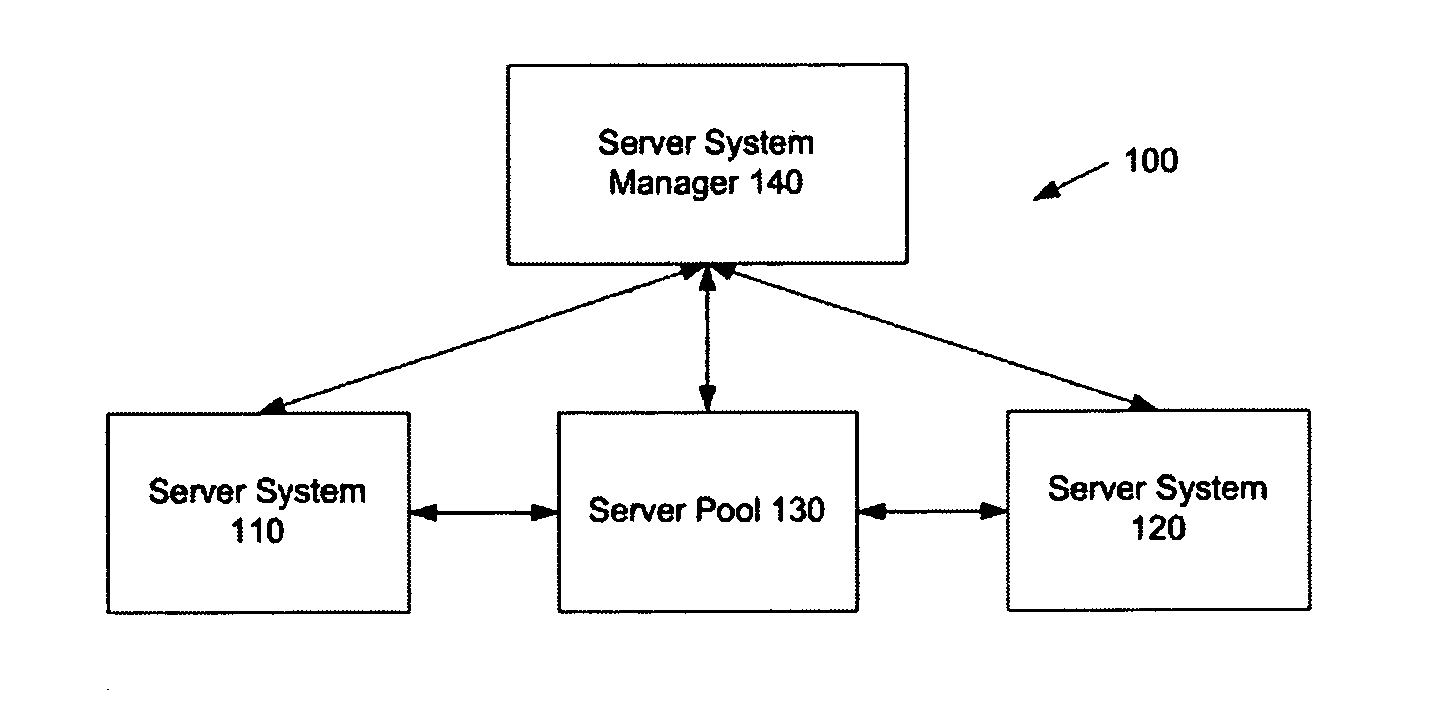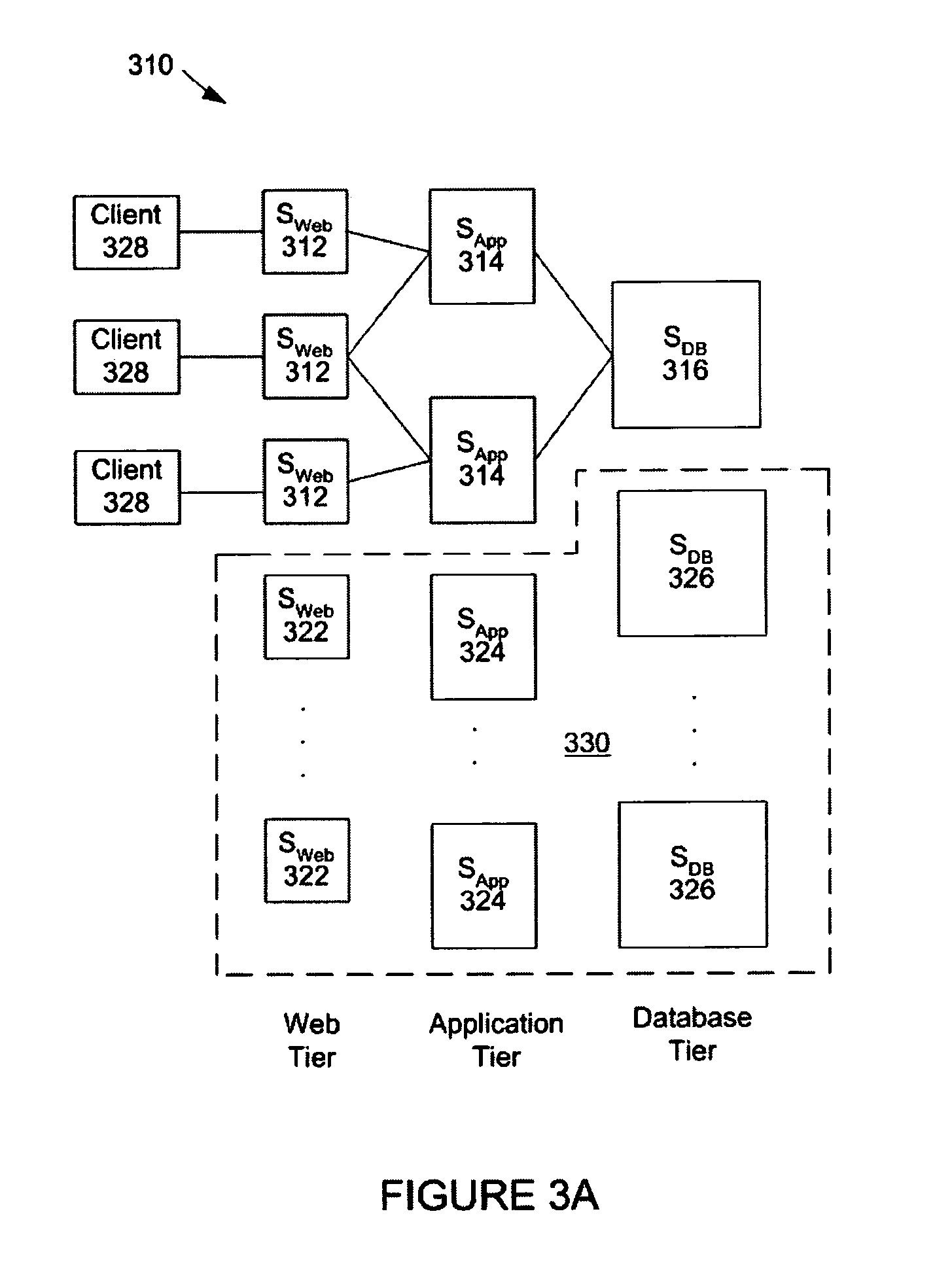System and method for allocating server resources
a server resource and system technology, applied in the field of system and method for allocating server resources, can solve the problems of inefficient trial and error methods to determine how many server machines must be allocated to meet user demand, system level performance degradation, simulation,
- Summary
- Abstract
- Description
- Claims
- Application Information
AI Technical Summary
Benefits of technology
Problems solved by technology
Method used
Image
Examples
example
[0095]To illustrate the algorithms to determine the bounds of the feasible solution, let sweb=0.3, sApp=0.5, uweb=0.3, uApp,=0.4, T=1. Notice that Sweb+SApp=0.8 which is less than T, hence the necessary and sufficient condition for feasibility of the optimization problem is satisfied. The objective then is to find the best of all possible solutions in the feasible region that has the minimum (or the maximum) value of the objective function. From Equation 14, the lower bounds may be found by substitution:
[0096]NWeb>0.3(1-0.5)1-0.3-0.5=0.75;leadingtoNWeb≥1;(24)
[0097]NApp>0.4(1-0.3)1-0.3-0.5=1.4;leadingtoNApp≥2;(25)
[0098]If hWeb=1, hApp=2, then the continuous-relaxation algorithms (Equations 20-23) provide the following bounds for the two-tiered server system:
[0099]γ=1·0.3·0.3+2·0.5·0.41-0.3-0.5=4.6623;(26)NWebc=0.3+4.66230.3·0.3 / 1=1.6987;(27)NAppc=0.4+4.66230.5·0.4 / 2=1.8743;(28)ZC=1·0.3+2·0.4+4.6623(0.3+0.6325)=5.4473.(29)
[0100]The integer-optimal solution (foun...
PUM
 Login to View More
Login to View More Abstract
Description
Claims
Application Information
 Login to View More
Login to View More - R&D
- Intellectual Property
- Life Sciences
- Materials
- Tech Scout
- Unparalleled Data Quality
- Higher Quality Content
- 60% Fewer Hallucinations
Browse by: Latest US Patents, China's latest patents, Technical Efficacy Thesaurus, Application Domain, Technology Topic, Popular Technical Reports.
© 2025 PatSnap. All rights reserved.Legal|Privacy policy|Modern Slavery Act Transparency Statement|Sitemap|About US| Contact US: help@patsnap.com



